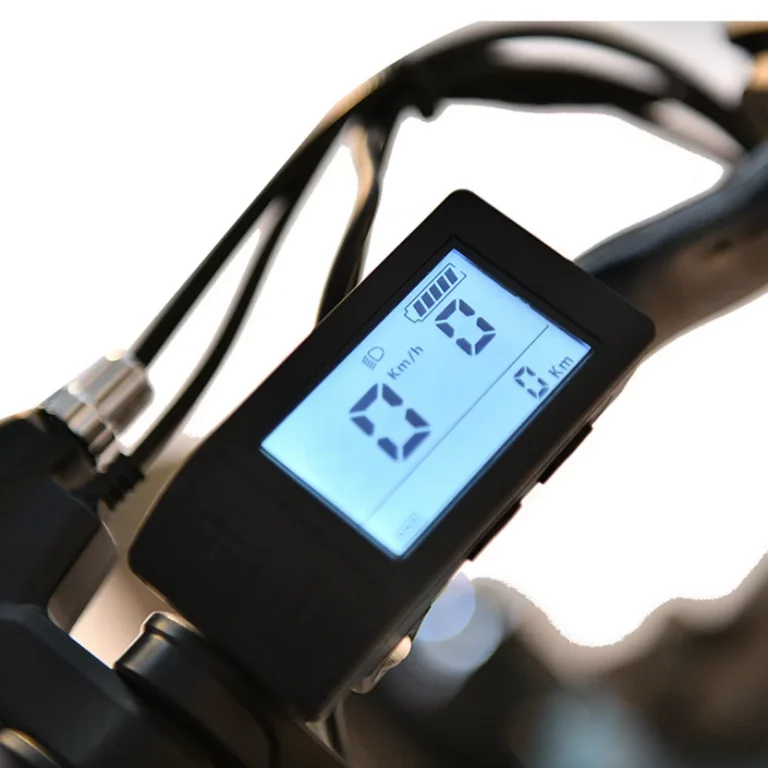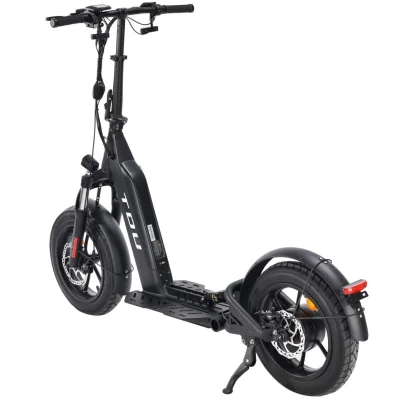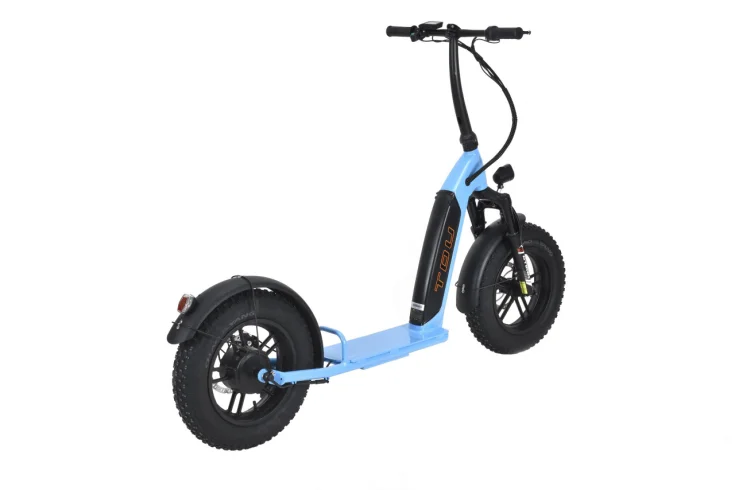Exploring the Benefits of E-Scooters in Urban Areas
As urban areas continue to grapple with environmental challenges, the emergence of e-scooters has offered a promising solution for sustainable and accessible mobility. Let’s delve into the significant benefits that e-scooters bring to urban environments.
A Greener Way to Travel
Reducing Carbon Footprint
E-scooters have proven to be a game-changer in reducing carbon emissions. Studies have shown that the carbon footprint of e-scooters has rapidly decreased since their inception, with a remarkable 70% reduction in CO2 per kilometer traveled since January 2019. By replacing conventional trips with e-scooter rides, there can be an overall reduction in carbon emissions of up to 45%. This data underscores the substantial environmental impact of e-scooters, making them a pivotal component in the quest for greener urban transportation.
Alleviating Traffic Congestion
In addition to curbing carbon emissions, e-scooters play a crucial role in alleviating traffic congestion within urban areas. Shared scooters contribute significantly to reducing transportation emissions, preventing approximately 20 grams of CO2 emissions per mile ridden. Furthermore, by offering an efficient and economical mode of transportation, e-scooters help decrease car usage and save valuable time for commuters. These findings highlight how e-scooters not only provide an eco-friendly travel option but also contribute to smoother traffic flow and reduced congestion in cities.
Enhancing Urban Accessibility
Bridging the Last-Mile Gap
E-scooters are instrumental in bridging the last-mile gap, providing commuters with convenient access to public transit and other essential destinations. Their compact size and maneuverability make them ideal for short-distance travel within urban landscapes. As a result, they offer a practical solution for addressing the challenges associated with accessing public transportation systems and reaching final destinations efficiently.
Providing Flexible Mobility Solutions
Moreover, shared e-scooters offer flexible mobility solutions that cater to diverse traveler needs while minimizing environmental impact. They serve as a competitive and environmentally friendly transportation mode for short trips within cities, meeting travelers’ requirements for flexibility and personalized mobility. With their low environmental footprint and high social inclusion potential, e-scooters emerge as an inclusive and sustainable choice for urban mobility.
The Role of E-scooters in Urban Environmental Mobility
As urban landscapes evolve, the role of e-scooters becomes increasingly pivotal in shaping sustainable urban development and fostering healthier cityscapes. Let’s explore how e-scooters are contributing to urban environmental mobility and examine compelling case studies that underscore their positive impact.
Supporting Sustainable Urban Development
E-scooters have emerged as a catalyst for sustainable urban development, offering a viable solution to reduce traffic congestion, cut emissions, and enhance overall mobility. By integrating e-scooter sharing systems into existing transportation networks, cities can effectively address the challenges associated with last-mile connectivity and promote eco-friendly travel options. The adoption of e-scooters aligns with the principles of sustainable urban planning by encouraging multimodal transportation and reducing reliance on traditional car-centric models. This shift towards sustainable urban development not only mitigates environmental impact but also fosters inclusive and accessible mobility solutions for diverse urban populations.
Contributing to Healthier Cityscapes
The proliferation of e-scooters has contributed to the creation of healthier cityscapes by promoting active modes of transportation and reducing air pollution. Studies have consistently highlighted the potential of e-scooters to decrease carbon emissions, particularly for short-distance trips within urban areas. By providing an alternative to conventional car usage, e-scooters play a vital role in curbing traffic-related air pollution and improving air quality in densely populated city centers. Additionally, their compact size and maneuverability enable efficient navigation through urban environments, further enhancing the overall livability and sustainability of cityscapes.
Case Studies: E-Scooters Making a Difference
Success Stories from Around the Globe
In Bristol, a comprehensive analysis of 190,000 e-scooter trips over three months revealed a substantial 45% reduction in greenhouse gas emissions compared to replaced trips. This evidence underscores the positive impact of e-scooters on environmental sustainability by significantly decreasing carbon emissions. Furthermore, micro-mobility initiatives have been evaluated as effective alternatives for door-to-door traveling within urban settings due to their ability to cruise at similar speeds to bicycles while requiring less road space.
Lessons Learned and Best Practices
The introduction of e-scooter sharing systems has prompted cities and transportation planners to reevaluate existing transportation infrastructures. By leveraging data-driven insights from successful deployments, cities can optimize infrastructure planning and develop tailored strategies for integrating e-scooter programs into their mobility ecosystems. These best practices encompass considerations such as designated parking zones, charging station placement, user education campaigns, safety protocols, and regulatory compliance measures.
Implementing E-Scooter Programs: A Step-by-Step Guide
As urban areas embrace the integration of e-scooters to enhance mobility, it is essential to navigate through a comprehensive step-by-step process for successful implementation. This guide encompasses meticulous planning and strategic execution to ensure the seamless introduction and operation of e-scooter programs within urban environments.
Planning and Preparation
Assessing Urban Infrastructure Needs
Before launching an e-scooter program, it is imperative to conduct a thorough assessment of urban infrastructure needs. This involves evaluating existing transportation networks, identifying high-traffic zones, and determining suitable locations for docking stations and charging points. Insights from stakeholders in Germany underscore the significance of aligning e-scooter deployment with urban infrastructure requirements, ensuring that the program complements existing transit systems and addresses specific mobility gaps effectively.
Engaging with Community Stakeholders
Community engagement forms a cornerstone of successful e-scooter program implementation. Collaboration with local authorities, residents, businesses, and advocacy groups fosters a deeper understanding of community needs and concerns. The study by Blickstein, S.G., Brown, C.T., & Yang, S. accentuates the pivotal role of stakeholder involvement in shaping inclusive micromobility solutions. By soliciting input from diverse stakeholders, cities can tailor e-scooter programs to meet the unique demands of their communities while promoting equitable access and participation.
Launching Your E-Scooter Program
Selecting the Right E-Scooter Models
The selection of appropriate e-scooter models is a critical decision that significantly influences the success of a program. Factors such as durability, battery life, safety features, and user comfort should be carefully evaluated when choosing e-scooters for deployment. Insights from various authors emphasize the importance of selecting reliable models that align with local regulations and user preferences. Moreover, considerations for gender participation in micromobility use highlight the need for diverse e-scooter options that cater to varying user demographics and preferences.
Setting Up Charging Stations and Parking Zones
Establishing an efficient network of charging stations and designated parking zones is fundamental in ensuring the operational sustainability of an e-scooter program. The National Academies’ research underscores the multifaceted benefits derived from well-planned charging infrastructure within communities embracing e-scooters. Strategic placement of charging stations at key transit hubs and high-demand areas optimizes accessibility while minimizing operational disruptions due to low battery levels. Additionally, designated parking zones contribute to orderly deployment and retrieval processes while mitigating potential obstructions within public spaces.
Maximizing the Impact of E-Scooters: Tips and Strategies
As urban areas strive to maximize the impact of e-scooters in enhancing environmental mobility, it is crucial to implement effective strategies that encourage widespread adoption and ensure continuous improvement. Let’s explore essential tips and strategies for optimizing the utilization of e-scooters within urban environments.
Encouraging Widespread Adoption
Educational Campaigns and Incentives
To foster widespread adoption of e-scooters, comprehensive educational campaigns are imperative to raise awareness about their benefits and safe usage. These campaigns should emphasize the positive environmental impact of e-scooters, highlighting their role in reducing carbon emissions and alleviating traffic congestion. Moreover, educational initiatives can address safety concerns by providing guidelines for responsible riding and promoting adherence to traffic regulations. By collaborating with local authorities, e-scooter operators can organize workshops, seminars, and informational materials to educate the public about the sustainable advantages of e-scooters as an eco-friendly mode of transportation.
In addition to educational efforts, offering incentives can significantly influence user behavior and promote the uptake of e-scooter usage. Incentive programs such as discounted ride fares for first-time users or loyalty rewards for frequent riders can serve as powerful motivators for individuals to opt for e-scooters over traditional modes of transport. Furthermore, partnerships with public transit agencies to provide integrated fare options for combined e-scooter and public transit journeys can further incentivize commuters to embrace this sustainable mobility solution.
Ensuring Safety and Compliance
Ensuring the safety of e-scooter users is paramount in fostering widespread adoption and positive public perception. Implementing robust safety measures through rider education on helmet usage, safe riding practices, and respect for pedestrian spaces is essential in mitigating potential risks associated with e-scooter usage. Collaborative efforts between city authorities, law enforcement agencies, and e-scooter operators can lead to the development of safety protocols that prioritize user well-being while promoting responsible riding behaviors.
Furthermore, stringent compliance with local regulations regarding speed limits, parking guidelines, and operational hours is vital in establishing a harmonious integration of e-scooters within urban landscapes. By adhering to regulatory frameworks governing micro-mobility operations, operators demonstrate their commitment to upholding community standards while contributing positively to urban environmental mobility.
Monitoring and Improving
Gathering User Feedback
Continuous monitoring through gathering user feedback serves as a valuable tool in understanding user experiences and identifying areas for improvement. Conducting regular surveys among e-scooter users enables operators to gain insights into consumer sentiments regarding ride satisfaction, safety perceptions, and suggestions for enhancing service quality. By actively soliciting feedback from users on aspects such as ride comfort, accessibility features, charging station availability, and overall experience satisfaction levels, operators can adapt their services based on real-time user input.
Moreover, leveraging data analytics from user feedback allows operators to identify trends related to trip patterns, peak usage hours, popular routes, and user demographics. This empirical knowledge provides a foundation for informed decision-making in optimizing fleet deployment strategies while catering to diverse commuter needs effectively.
Adapting to Evolving Urban Needs
The dynamic nature of urban environments necessitates a proactive approach towards adapting e-scooter programs according to evolving urban needs. Integrating flexible operational models that respond swiftly to changing mobility demands ensures that e-scooter services remain relevant amidst shifting urban landscapes. For instance,…
The Future of Urban Mobility
Reflecting on the Journey
As an avid e-scooter user, I have witnessed firsthand the transformative impact of e-scooters on urban mobility. E-scooters have swiftly emerged as the preferred mode of intra-city travel, offering unparalleled accessibility and convenience. With just a few taps on a mobile app, users can effortlessly navigate through bustling city streets without the hassle of traffic congestion. The seamless integration of e-scooters into urban infrastructure has redefined the way commuters traverse cities, marking a significant shift towards sustainable and efficient mobility solutions.
Innovations on the Horizon
The future of urban mobility holds promising innovations that are poised to further revolutionize transportation within urban landscapes. One notable advancement is the ongoing efforts to address equity and inclusivity in e-scooter usage. Research findings by McQueen shed light on the disparities in e-scooter adoption, emphasizing the need for targeted strategies to ensure equitable access across diverse demographic groups. By addressing factors such as transit travel time and parking cost, cities can work towards fostering greater equity in transportation choices, thereby enhancing accessibility for all members of the community.
Moreover, technological advancements continue to drive enhancements in e-scooter design and functionality. From improved battery efficiency to enhanced safety features, manufacturers are continuously refining e-scooter models to offer a more seamless and secure riding experience. These developments not only elevate user satisfaction but also contribute to mitigating concerns surrounding safety, theft, vandalism, and battery limitations highlighted in recent research papers.
The Role of Policy and Technology in Shaping the Future
The convergence of policy frameworks and technological innovation plays a pivotal role in shaping the future landscape of urban mobility. While e-scooters have garnered popularity among urban dwellers, city officials are grappling with challenges related to their proliferation. As highlighted by article authors, concerns have been raised regarding the spatial impact of dockless scooters and bikes on city sidewalks. In response to these considerations, policymakers are actively engaging with stakeholders to formulate regulations that balance the benefits of micro-mobility with urban space management.
Furthermore, ongoing collaborations between technology developers and city planners are driving forward-looking initiatives aimed at optimizing e-scooter deployment while minimizing disruptions within urban environments. These strategic partnerships seek to harness data-driven insights from user experiences and operational patterns to inform policy decisions that promote sustainable coexistence between e-scooters and existing urban infrastructures.
In summary, as we look ahead to the future of urban mobility, it is evident that continued advancements in technology and proactive policy interventions will play a defining role in shaping an inclusive, sustainable, and seamlessly integrated ecosystem for e-scooters within our cities.
This marks an exciting juncture where collaborative efforts between policymakers, technology innovators, and community stakeholders converge towards redefining urban mobility for generations to come.
Yongkang LOHAS Vehicle Co., Ltd
Lohas is a leading company in the electric mobility industry, known for its innovative and high-quality E-Scooters. These E-Scooters are designed with the urban commuter in mind, providing a green, efficient, and convenient mode of transportation that aligns with the principles of environmental sustainability.
Lohas’s E-Scooters are powered by high-capacity lithium batteries, ensuring long-lasting performance and reducing the need for frequent charging. They are equipped with powerful motors that provide smooth and steady acceleration, making them ideal for navigating through city streets. The E-Scooters also feature advanced braking systems for safe and reliable stopping power.
One of the standout features of Lohas’s E-Scooters is their compact and lightweight design. They are easy to fold and carry, making them perfect for commuters who need to switch between different modes of transportation. Despite their compact size, these E-Scooters do not compromise on comfort, with adjustable handlebars and cushioned seats to ensure a comfortable ride.
Lohas’s E-Scooters also come with smart features like LED headlights for safe night riding, and an intuitive control panel that displays speed, battery life, and other essential information. Some models even offer connectivity with smartphone apps for GPS navigation and performance tracking.
In the quest for urban environmental mobility, Lohas’s E-Scooters represent a significant step forward. They offer a practical and eco-friendly solution for urban commuting, reducing carbon emissions and traffic congestion. With Lohas’s E-Scooters, urban dwellers can enjoy a more sustainable and efficient way of getting around the city.






